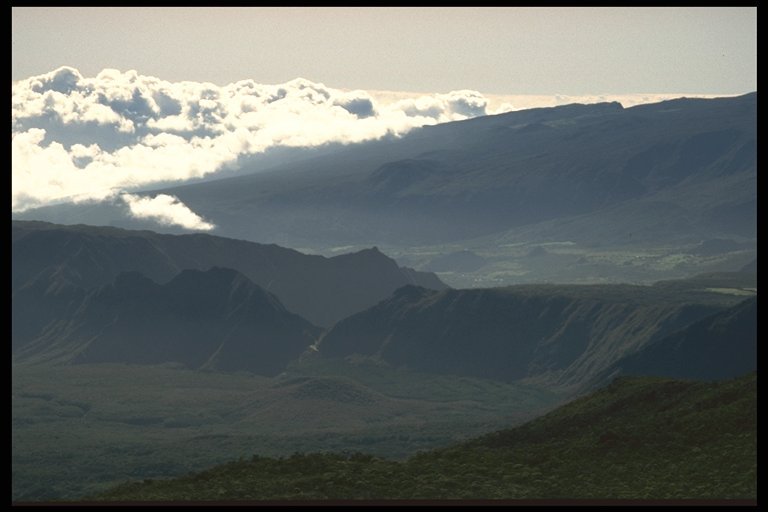zurück Reunion

Plaine de Palmiste ille de La reunion indian ocean
Plaine des
Palmistes is a region located in the
central-eastern part of Réunion Island,
one of the Indian Ocean's most
scenic and ecologically diverse locations. The area is particularly known for
its lush rainforests,
tropical vegetation, and its
significance as part of the island's
protected natural environment. The name "Plaine des Palmistes"
translates to "Plain of the Palm Trees," referring to the numerous species of
palms that grow in the area.
Key
Features of Plaine des Palmistes:
1.
Location and Geography:
-
Situated in the Highlands: The
Plaine des Palmistes is
located at a relatively high altitude on the island, surrounded by rugged
mountains and volcanic landscapes. It lies between the
Cirque de Salazie and the
Volcano of Piton des Neiges,
making it an area of high natural beauty and geological interest.
-
Volcanic Terrain: Like much
of Réunion Island, the region is part of a
volcanic landscape, with
volcanic soil that is rich and fertile, supporting a variety of plant
species.
-
Wet and Humid Climate:
The area has a humid subtropical
climate, receiving considerable rainfall throughout the year, which
fosters the development of the lush forests and
tropical vegetation
typical of the region.
2. Natural Beauty and Biodiversity:
-
Rainforests and Flora:
The Plaine des Palmistes is covered with dense
rainforests and lush
vegetation, with
palms,
fern trees, and a wide
variety of tropical plants. The rich biodiversity makes the area an
important ecological region
on the island.
-
Unique Wildlife: This
part of Réunion Island is home to
many endemic species of plants and animals. The forests here
support numerous species of birds,
insects, and
reptiles, many of which
are found nowhere else in the world. It is a haven for nature lovers and
wildlife enthusiasts.
-
Rivers and Waterfalls:
The area is traversed by several rivers and streams, creating a network of
waterfalls and
natural pools. The most
famous waterfall is the Cascade de
la Rivière de l’Est, which is located nearby.
3. Cultural and Historical Significance:
-
Agriculture and Farming:
The Plaine des Palmistes is an agricultural hub for
Réunion Island, with
farmers cultivating crops like
citrus fruits, vegetables,
and sugarcane. The
fertile volcanic soil makes this region ideal for farming.
-
Creole Villages: The town
of Plaine des Palmistes
itself is a small, traditional Creole village with a rich
local culture. The people
in this area often rely on farming and agriculture for their livelihoods.
The village also attracts tourists who are exploring the
nature and
landscapes of Réunion.
-
Historical Connections:
The region has historical importance for the island’s settlers, as it was
one of the first areas to be colonized due to its fertile land.
4. Outdoor Activities and Tourism:
-
Hiking and Trekking:
Plaine des Palmistes offers several
hiking trails that
attract nature enthusiasts and trekkers. The region’s
mountainous terrain,
waterfalls, and
rainforests provide ample
opportunities for outdoor exploration and adventure.
-
Wildlife Watching: With
its wealth of unique flora and fauna, the region is an excellent place for
bird watching,
botany, and
wildlife photography.
-
Rivière des Roches: One
of the most beautiful spots to visit in this region is the
Rivière des Roches, a
natural area surrounded by rainforest. It offers breathtaking views of the
river and the surrounding mountains.
-
Cultural Tourism:
Visitors can also experience the
Creole culture of the area, with local events, festivals, and
markets showcasing the island’s traditions, cuisine, and craftsmanship.
5. Access and Transportation:
-
Road Access: The Plaine
des Palmistes is easily accessible by road from
Saint-Benoît, which is
located to the east of the island. The
RN3 road leads visitors
into the heart of the area, passing through picturesque landscapes along the
way.
-
Public Transport: Public
transportation options are limited, so most visitors travel to Plaine des
Palmistes by car. The roads are winding and narrow, especially as you climb
into the higher elevations of the island.
6. Best Time to Visit:
- The best time to visit Plaine des
Palmistes is during the dry season
(from May to November),
when the weather is cooler and there’s less chance of rainfall. The
wet season (from
December to April) can
bring heavy rains, making some trails muddy and difficult to navigate,
though the lush vegetation is particularly vibrant during this time.
In Summary:
Plaine des Palmistes is a
natural gem on
Réunion Island, offering a
mix of tropical rainforests, volcanic landscapes, diverse wildlife, and
agricultural heritage. Whether you are hiking through the rainforest,
discovering the village's culture, or enjoying the
waterfalls and
mountain views, the region
provides visitors with a chance to experience the island’s unique natural beauty
and cultural richness. It’s an ideal destination for those looking to explore
the more tranquil and ecologically diverse parts of Réunion.
 26.07.25 Copyright Dirk
Rauschenbach Koelnerstrasse 293 51702 Bergneustadt
Datenschutzerklaerung 02261 9788972 Mail ccooly(
at) web.de
26.07.25 Copyright Dirk
Rauschenbach Koelnerstrasse 293 51702 Bergneustadt
Datenschutzerklaerung 02261 9788972 Mail ccooly(
at) web.de
 Safaris
Bergsteigen
Wandern
Inselwandern Weltweit
Safaris
Bergsteigen
Wandern
Inselwandern Weltweit
 Europa
Inselwandern
Europa
Inselwandern
 Städtewandern
Städtewandern
 Paintings
Paintings Dirk Rauschenbach
Dirk Rauschenbach
 Safaris
Bergsteigen
Wandern
Inselwandern Weltweit
Safaris
Bergsteigen
Wandern
Inselwandern Weltweit
 Europa
Inselwandern
Europa
Inselwandern
 Städtewandern
Städtewandern
 Paintings
Paintings Dirk Rauschenbach
Dirk Rauschenbach

![]() 26.07.25 Copyright Dirk
Rauschenbach Koelnerstrasse 293 51702 Bergneustadt
Datenschutzerklaerung 02261 9788972 Mail ccooly(
at) web.de
26.07.25 Copyright Dirk
Rauschenbach Koelnerstrasse 293 51702 Bergneustadt
Datenschutzerklaerung 02261 9788972 Mail ccooly(
at) web.de